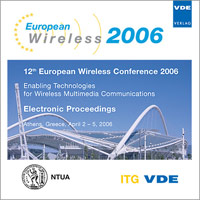Fundamental Mechanisms of Multi-Hop
Konferenz: European Wireless 2006 - 12th European Wireless Conference 2006 - Enabling Technologies for Wireless Multimedia Communications
02.04.2006 - 05.04.2006 in Athens, Greece
Tagungsband: European Wireless 2006
Seiten: 6Sprache: EnglischTyp: PDF
Persönliche VDE-Mitglieder erhalten auf diesen Artikel 10% Rabatt
Autoren:
Newton, Mark; Thompson, John (Institute For Digital Communications, School of Engineering and Electronics, The University of Edinburgh, King’s Buildings, Mayfield Road, Edinburgh, EH9 3JL, UK)
Naden, Mark (Nortel, London Road, Harlow, Essex, CM17 9NA, UK)
Inhalt:
The increased data-rate requirements of emerging multimedia services mean that cellular operators are turning towards relaying/multi-hop techniques to increase the capacity of their networks. As multi-hop has complex interactions between the routing and medium access control decisions, the extent to which analytical expressions can be used to explore its benefits are limited. Consequently simulations tend to be the preferred way of assessing the performance benefits of candidate relaying schemes. To understand the potential benefits of extending the coverage/capacity of traditional fixed infrastructure cellular networks with multi-hop techniques, one must first understand the key mechanisms which it exploits. In this paper a basic single cell multi-hop simulation is described and used to consider how the key performance metrics of capacity and coverage vary as a function of relay density.


